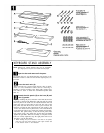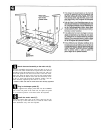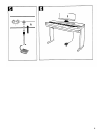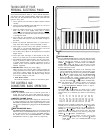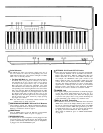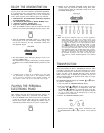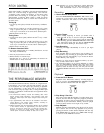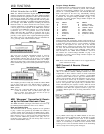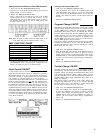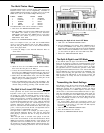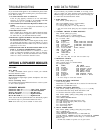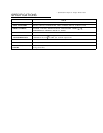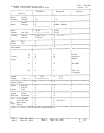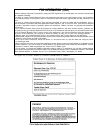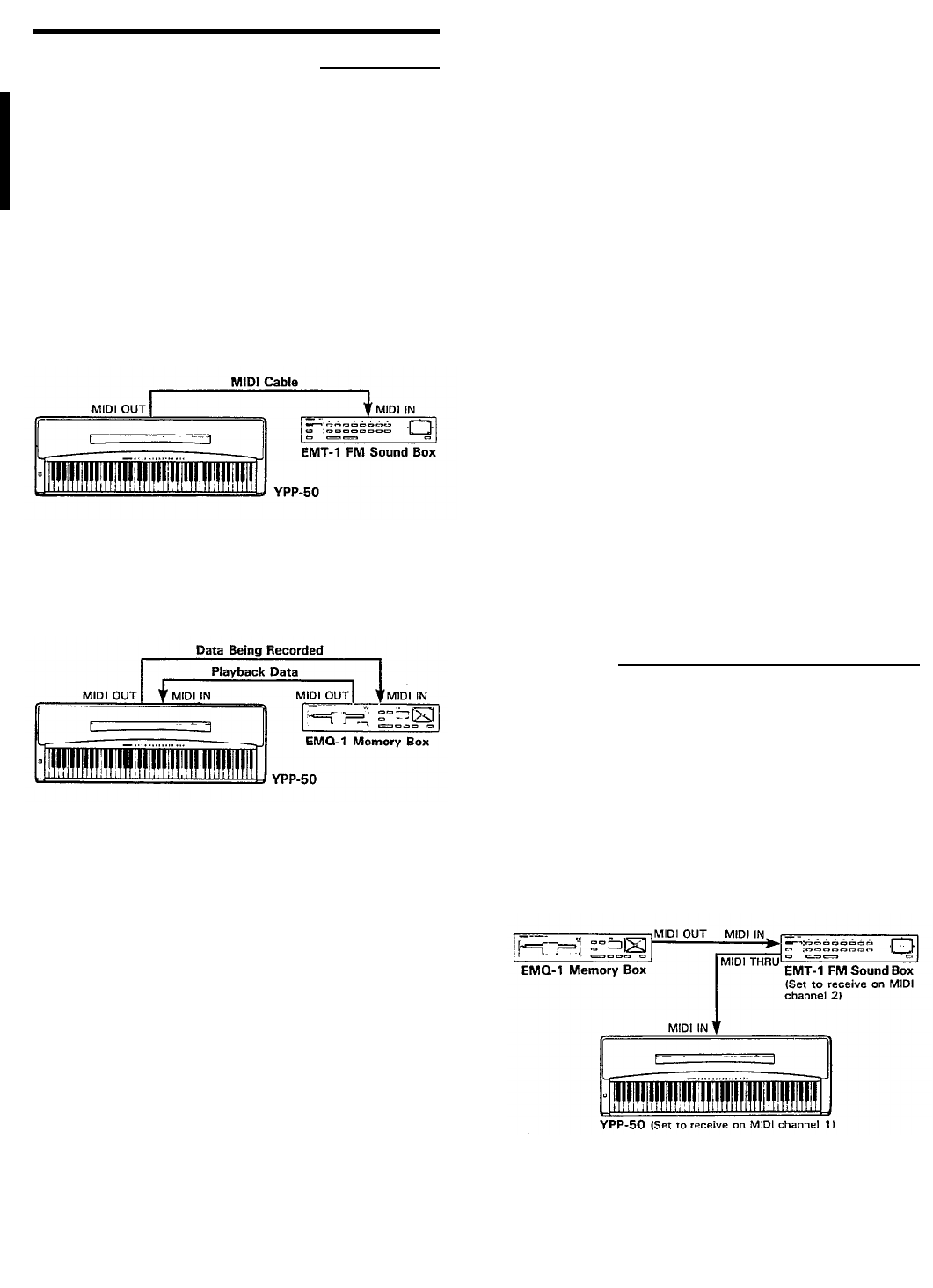
MIDI FUNCTIONS
A Brief Introduction to MIDI
MIDI, the Musical Instrument Digital Interface, is a world-
standard communication interface that allows MIDI-compatible
musical instruments and equipment to share musical information
and control one another. This makes it possible to create “sys-
tems” of MIDI instruments and equipment that offer far greater
versatility and control than is available with isolated instruments.
For example, most MIDI keyboards (including the Personal
Electronic Piano, of course) transmit note and velocity (touch
response) information via the MIDI OUT connector whenever
a note is played on the keyboard. If the MIDI OUT connector
is connected to the MIDI IN connector of a second keyboard
(synthesizer, etc.) or a tone generator such as the Yamaha
EMT-1 FM Sound Box (essentially a synthesizer with no key-
board), the second keyboard or tone generator will respond
precisely to notes played on the original transmitting keyboard.
The result is that you can effectively play two instruments at
once, providing thick multi-instrument sounds.
—
—
This same type of musical information transfer is used for
MIDI sequence recording. A sequence recorder such as the
Yamaha EMQ-1 Memory Box can be used to “record” MIDI
data received from a Personal Electronic Piano, for example.
When the recorded data is played back, the Personal Electronic
Piano automatically “plays” the recorded performance in precise
detail.
The examples given above really only scratch the surface. MIDI
can do much, much more. The YPP-50 offers a number of
MIDI functions that allow it to be used in fairly sophisticated
MIDI systems.
Note: Always use a high-quality MIDI cable to connect MIDI OUT
to MIDI IN terminals. Never use MIDI cables longer than
about 15 meters, since cables longer than this can pick up
noise which can cause data errors.
MIDI “Messages” Transmitted & Receiv-
ed by the Personal Electronic Piano ___
The MIDI information (messages) transmitted and received by
the YPP-50 Personal Electronic Piano are as follows:
Note and Velocity Data
This information tells the receiving keyboard or tone generator
to play a certain note (specified by the MIDI note number) at
a certain dynamic level (specified by the MIDI velocity value).
Note and velocity data is transmitted by the Personal Electronic
Piano whenever a key is pressed, and the Personal Electronic
Piano’s internal AWM tone generator will “play” the cor-
responding note(s) whenever note and velocity data is received
from an external MID1 device.
Program Change Numbers
The YPP-50 transmits a MIDI program number between 0 and
14 when one of its voice selectors is pressed. This normally
causes the correspondingly numbered voice or program to be
selected on a receiving MIDI device. The Personal Electronic
Piano will respond in the same way, automatically selecting
the appropriate voice when a MIDI program change number
is received. See “Program Change ON/OFF” on page 11 for
information on turning program change number reception and
transmission ON or OFF.
NO.
0
1
2
3
4
5
6
7
VOICE
PIANO
E.PIANO
HARPSI
VIBES
BRASS
STRINGS
P.ORGAN
BASS
NO.
VOICE
8 PIANO + BASS
9
E.PIANO + BASS
10
HARPSI + BASS
11
VIBES + BASS
12
BRASS + BASS
13
STRINGS + BASS
14
P.ORGAN + BASS
Control Change Numbers
Control Change data representing damper pedal operations is
transmitted by the Personal Electronic Piano whenever the pedal
is used. If the receiving device is a tone generator or another
keyboard, it will respond in the same way as the Personal
Electronic Piano’s internal tone generator when these controls
are used. The Personal Electronic Piano also receives and
responds to these as well as some additional control change
data described in the “MIDI DATA FORMAT” section of
this manual. See “Control Change ON/OFF” on page 11 for
information on turning control change number reception and
transmission ON or OFF.
Note: None of the YPP-50 MIDI functions can be engaged while the
built-in metronome is running.
MIDI Transmit & Receive Channel
Selection
The MIDI system allows transmission and reception of MIDI
data on 16 different channels. Multiple channels have been
implemented to allow selective control of certain instruments
or devices connected in series. For example, a single MIDI
sequence recorder could be used to “play” two different instru-
ments or tone generators. One of the instruments or tone genera-
tors could be set to receive only on channel 1, while the other
is set to receive on channel 2. In this situation the first instru-
ment or tone generator will respond only to channel-l infor-
mation transmitted by the sequence recorder, while the second
instrument or tone generator will respond only to channel-2
information. This allows the sequence recorder to “play” two
completely different parts on the receiving instruments or tone
generators.
In any MIDI control setup, the MIDI channels of the trans-
mitting and receiving equipment must be matched for proper
data transfer. An “OMNI” receive mode is also available,
which allows reception on all 16 MlDI channels. In the OMNI
mode it is not necessary to match the receive channel of the
receiving device to the the transmit channel of the transmitting
device (except when receiving mode messages).
10



